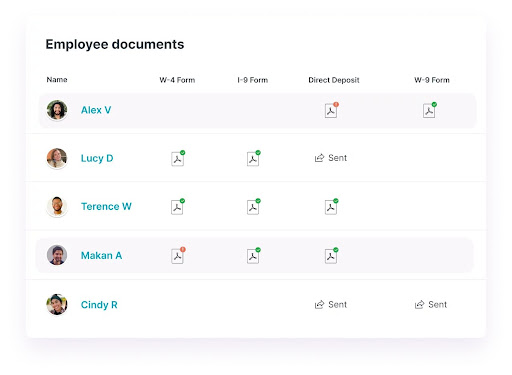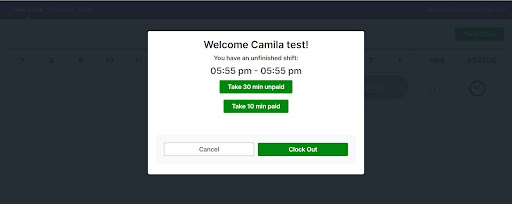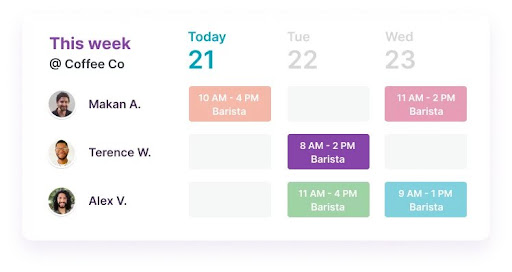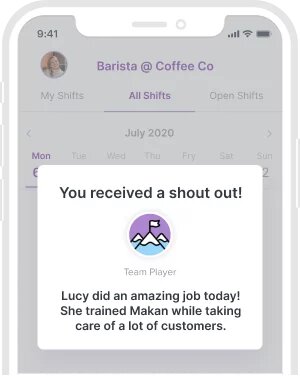|
As a small business owner, you need staff to reliably show up ready to work their scheduled shifts. But what happens when people start getting in late, missing shifts, or frequently requesting days off? That’s when having an employee attendance policy comes in handy. Attendance policies are tools that help you educate your team about what you consider a one-off absence or absenteeism, which means frequently missing work for unjustified reasons. They should also include information about all your internal processes and leave policies so everyone is clear about expectations. Employee attendance touches almost every aspect of your business. That’s why it’s important to have an all-in-one HR platform like Homebase to help you simplify time tracking, scheduling, payroll, and employee performance. Plus, our platform can store your internal policies and make them easily accessible for team members. So, let’s explore everything you should include in your policy.
Run a better team with smarter scheduling.
Optimize your schedule and keep your team in sync with Homebase. What is an employee attendance policy?An employee attendance policy is a document that contains a set of guidelines, policies, processes, and consequences regarding work attendance. Usually, it outlines business expectations for scheduling, punctuality, and leave requests. Team members should have access to this policy as soon as they join so they know how to manage days off, absences, or tardiness. And small business employee attendance policies can be divided into sections that:
Pro tip: Create, update, share, and reference your employee attendance policy frequently to encourage your team to follow workplace rules. Why are employee attendance policies important for small businesses?Small businesses need employee attendance policies — and not only because they foster accountability. They also:
Where do small businesses usually store employee attendance policies?Many small businesses store these kinds of policies in a big binder with a label on the cover that says: The Employee Handbook. But having a physical copy is inconvenient, hard to update, and easy to misplace or damage. A cloud-based employee handbook is a much better alternative. If you choose to use Homebase to track employee attendance, you’ll get access to HR and compliance experts who can review your policies and procedures to ensure you’re abiding by the regulations that apply to you. Plus, Homebase simplifies hiring and onboarding. Once you welcome a new employee, they’ll automatically get a welcome packet with everything they need to know to succeed in their position, including:
You can then access all signed employee documents within your Homebase account — and feel at ease knowing they’re safely stored. 
Source: https://joinhomebase.com/hr-compliance/Caption: Digitize your paperwork. Use Homebase to keep all your employee documents in the same place.
Run a better team with smarter scheduling.
Optimize your schedule and keep your team in sync with Homebase. The key components of an employee attendance policyEmployee attendance policies are detailed documents that explain all attendance-related matters. To create one that’s comprehensive and easy for employees to navigate, use these components as a template:
1. Absence tracking and documentationThe first act of every movie sets the rules of the world you’re about to explore. So, the first part of your employee attendance policy should explain the rules of your business. Define your attendance expectations, explain the meaning of absence without official leave (AWOL), and state the intention and scope of the document. Within this section, you should also cover how you’ll measure employee performance, as well as the potential consequences if people fail to comply. Overall, the document should invite them to find, read, and follow processes to avoid having a poor attendance record. It’s important that you build processes for every leave-related action. We all have unconscious biases and might end up being more relaxed with certain employees over others, depending on our relationship with them. So, tracking absences in a documented and standardized way reduces the chances of making gut decisions and ensures you treat people fairly and equitably. And an automated system can save the time you’d otherwise have to spend transcribing attendance records, which reduces human error and eliminates the possibility of losing or deleting files. We recommend using a solution like Homebase so employees can track their clock ins and outs — including breaks — and attendance from any smart device using a secure PIN code. That way, their hours will be securely recorded in a dashboard that supervisors can approve or edit directly from the app. They can then use that information to pay their team directly through Homebase or a built-in payroll integration. 
Source: https://app.joinhomebase.com/daily_rosterCaption: Use a secure time clock app and keep digital attendance records with Homebase.2. Leave policiesHere’s where you explain all the different leave policies, what each type entails, and how to request days off. This section should link out to relevant documents and include information regarding:
3. Schedules, shift changes, and overtimeUse this section to share expectations and regulations regarding schedules, overtime, and shift adjustments. For example, list the number of hours full-time and part-time employees are expected to work and how much overtime they’re allowed to do.

Source: https://joinhomebase.com/employee-scheduling/Caption: Schedule shifts and review who’s working each day for free on the Homebase app.4. Communication and policy enforcementThis section is mostly aimed at supervisors and managers as it usually outlines:
To encourage people to follow the rules, remind team members about your policy regularly. For instance, when you hire someone new, they’re probably expected to read and learn a bunch of new processes in a short period of time — and that can be overwhelming. So, you can’t assume a new employee will remember everything you mentioned or taught them during the first week. When management frequently refers back to their attendance policy, they also:
If you use an all-in-one HR platform like Homebase, the team communication app lets you shout individuals out for being attendance policy champions. And such reminders and acknowledgments encourage others to emulate the same behavior. 
Source: https://joinhomebase.com/team-communication/Caption: Celebrate team wins and reinforce business expectations and values with the Homebase team communication app.5. Accommodations and exceptionsBe sure to outline the need for accommodations for employees with specific requirements in your attendance policy. For example, let’s say you hire a person with a disability that needs to do physical therapy every day at 12:00 pm, but your afternoon shift starts at noon. You could allow them to start their shifts at 2pm instead. You might also need to make accommodations for people due to religious beliefs or medical conditions. Explain how they should request those adjustments and the processes that managers should use to approve them in an unbiased way. And if you find yourself having to make the same type of accommodations over and over again, add it as an attendance policy exception. Then, include an established process for requesting each one. Some other exceptions that you might need to account for are:
6. Procedure for reviews, feedback, and updatesThe employee attendance policy is a living document — it isn’t a one-off task you can simply cross off of your to-do list. Instead, come up with a process to ensure you view and update it regularly based on employee feedback, lessons learned, and new regulations. The moment your policies feel outdated and stop reflecting reality, people will stop paying attention to them. For example, if your leave policy says staff need to request vacation days one month in advance, but in reality, you need two months to organize your rosters and find replacements, you should adjust your policy. Should you have an employee attendance policy?Even small businesses need employee attendance policies in place to ensure they monitor staff performance in a fair and well-documented manner. And creating a document that outlines all of your business policies regarding punctuality, schedules, and leave is easier than you think. At least if you’re using Homebase. An all-in-one tool like Homebase connects you with a team of HR experts who can give you advice on your employee attendance policy and share examples you can take inspiration from. Then, you can host your finished document within a digital employee handbook and use the same app to track your team’s hours, schedule shifts, pay their salaries, and chat with them.
Run a better team with smarter scheduling.
Optimize your schedule and keep your team in sync with Homebase. The post A guide to creating an employee attendance policy for your small business appeared first on Homebase. via Homebase https://joinhomebase.com/blog/employee-attendance-policy/
0 Comments
Leave a Reply. |
 RSS Feed
RSS Feed
